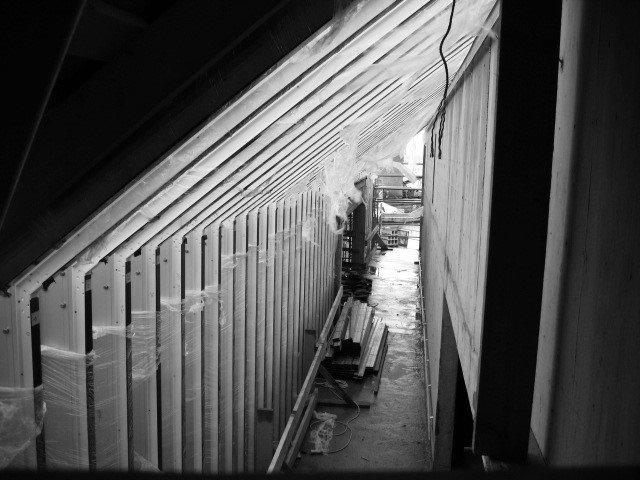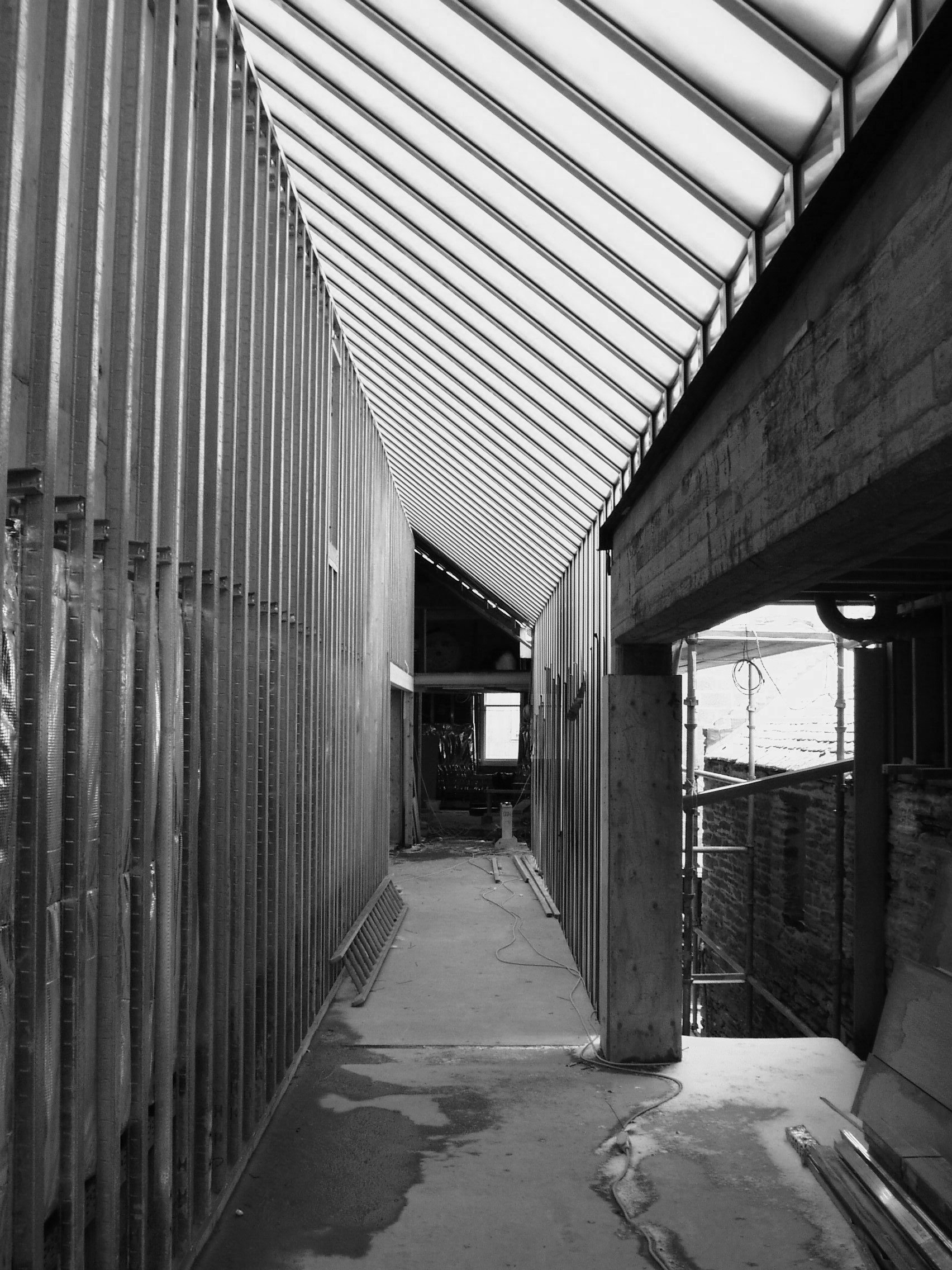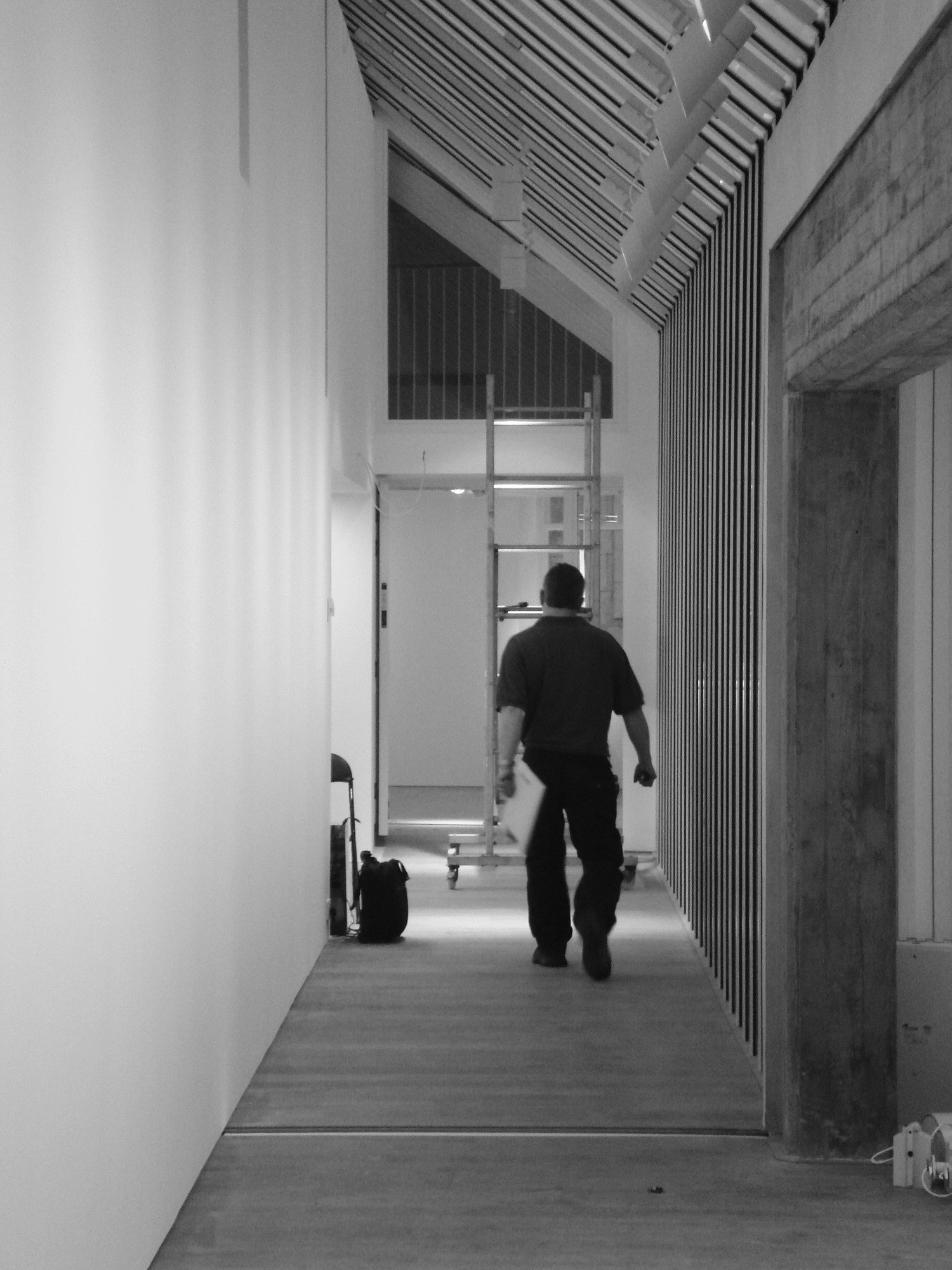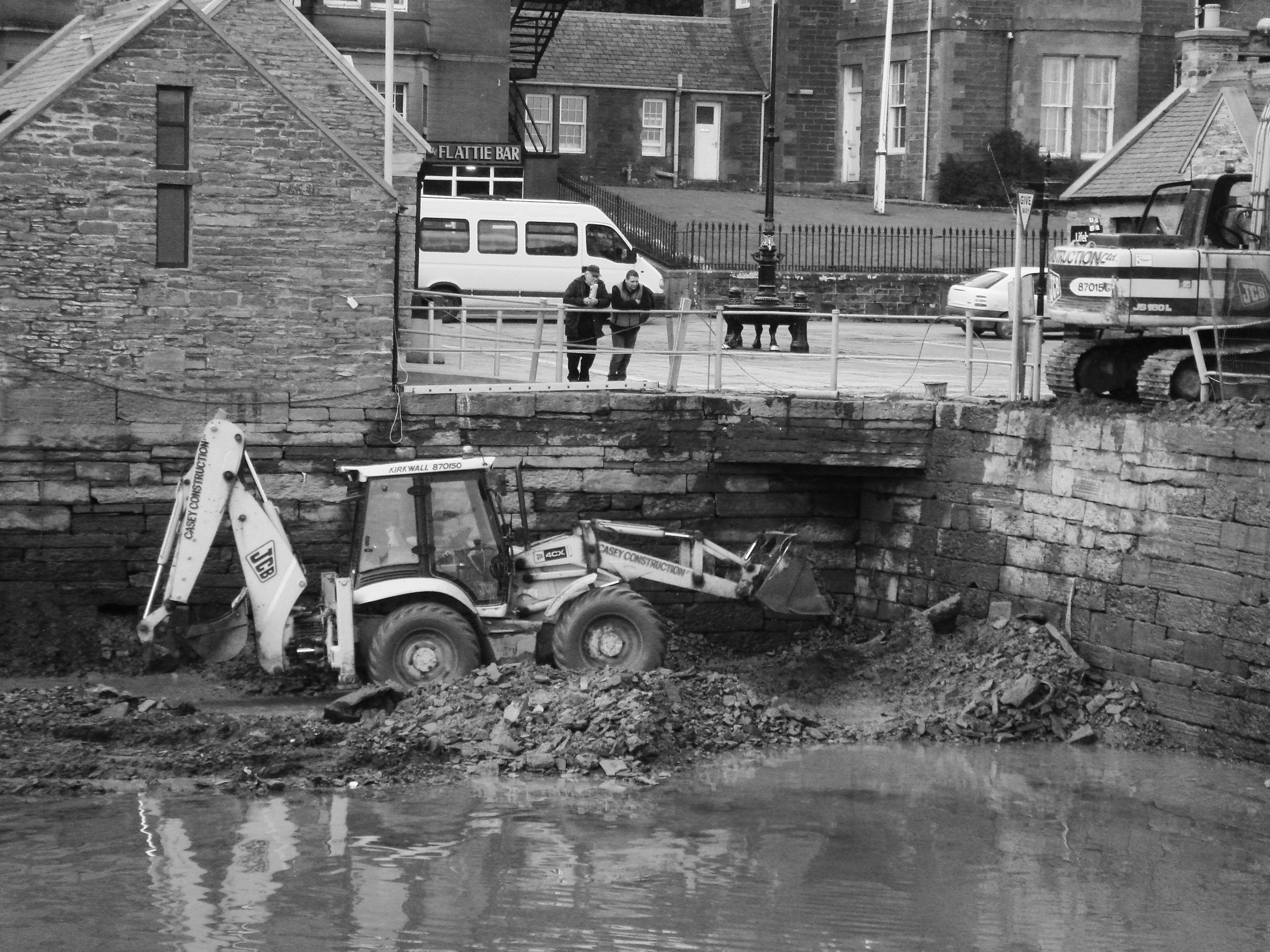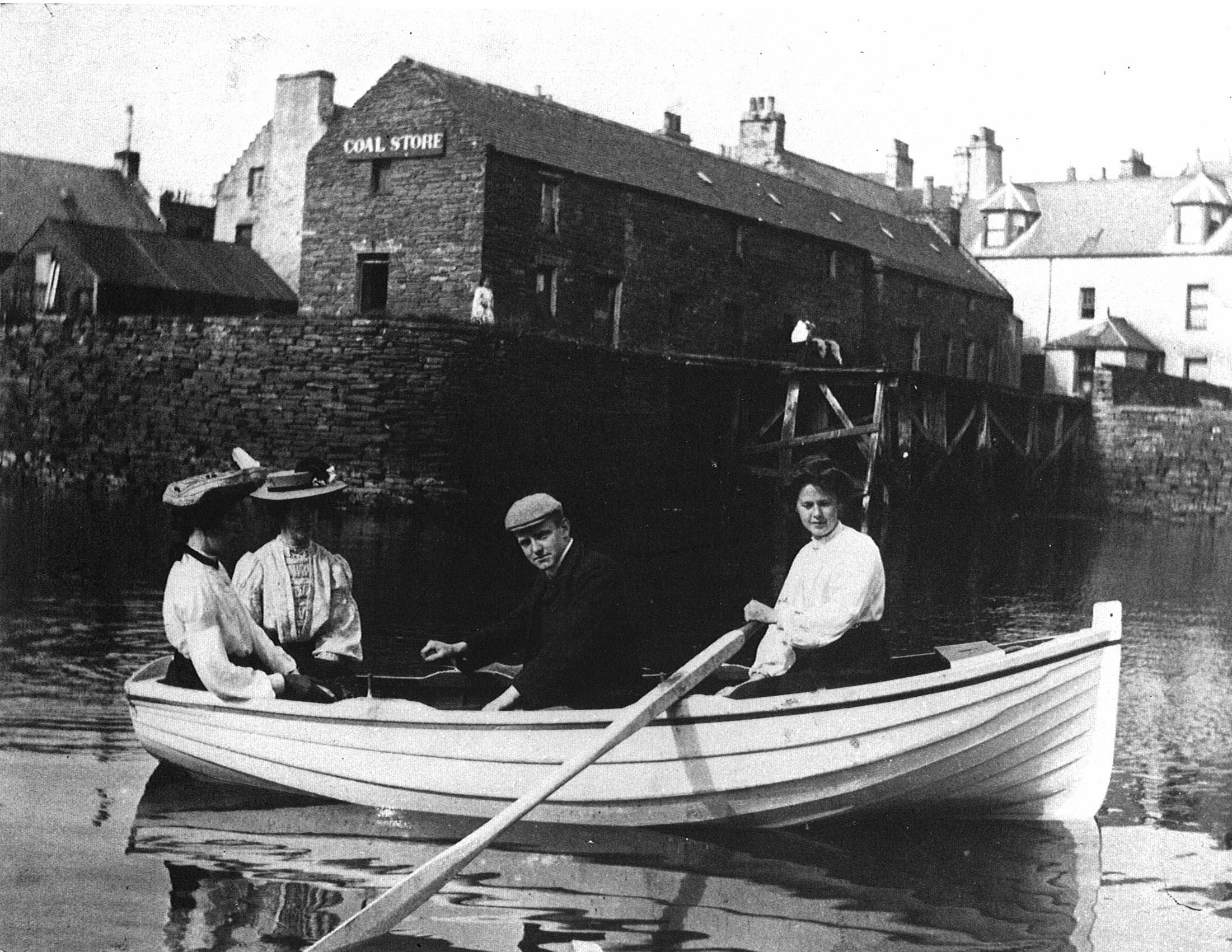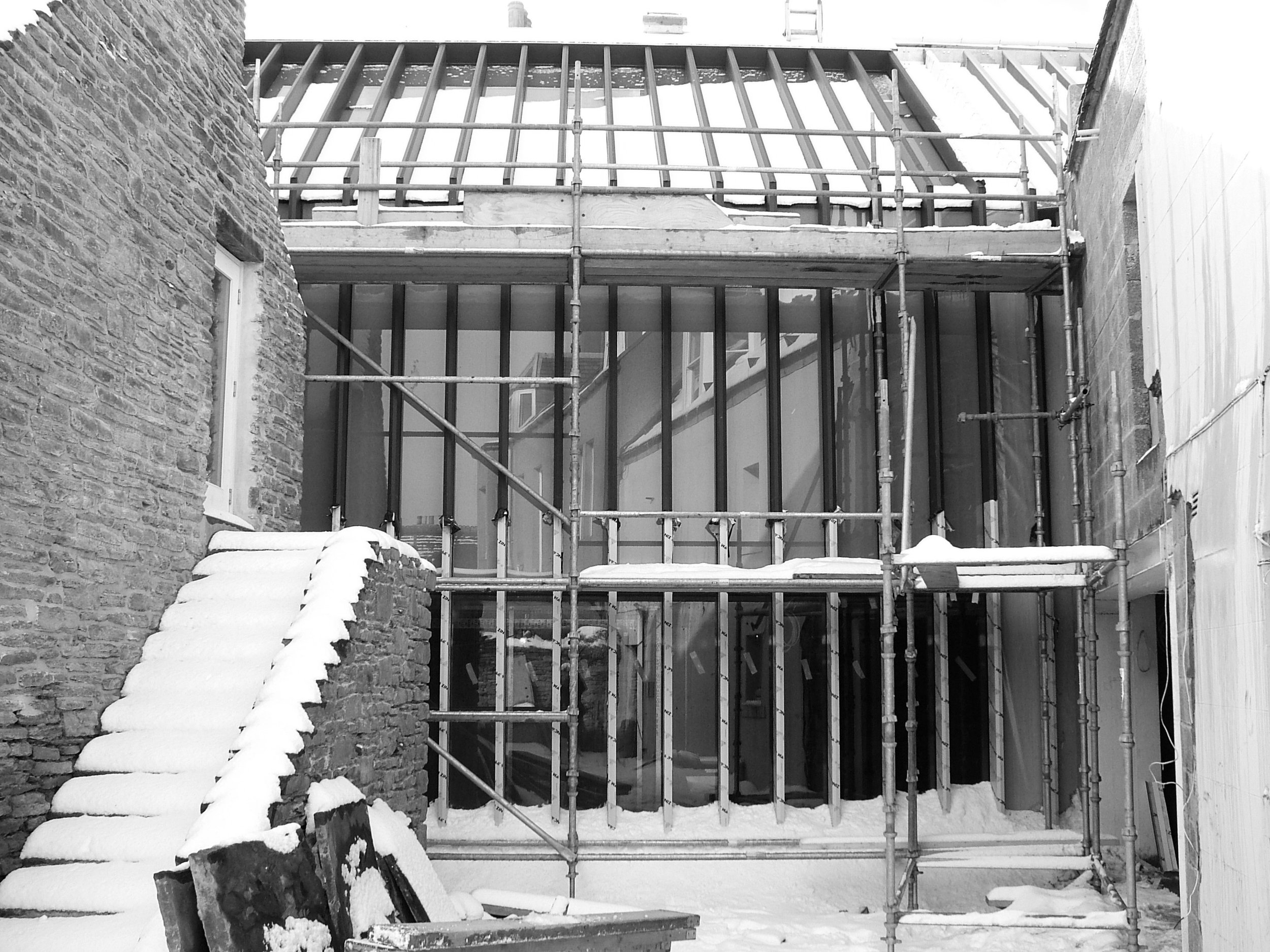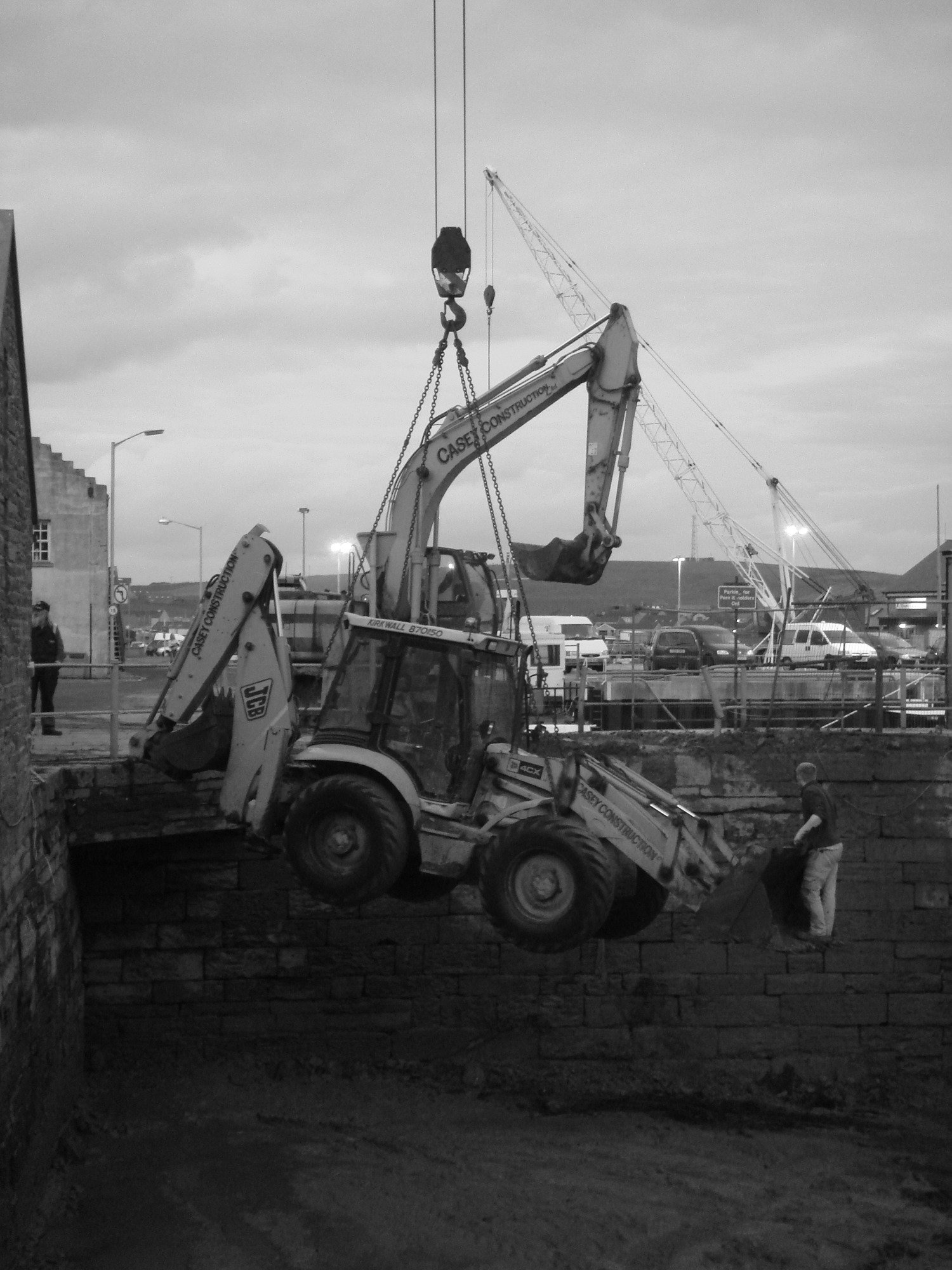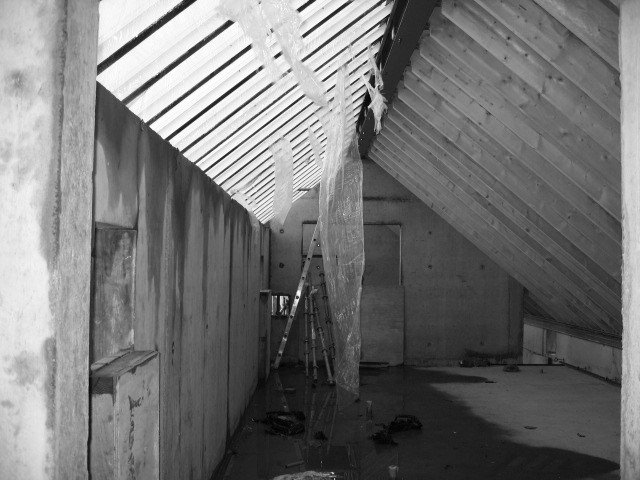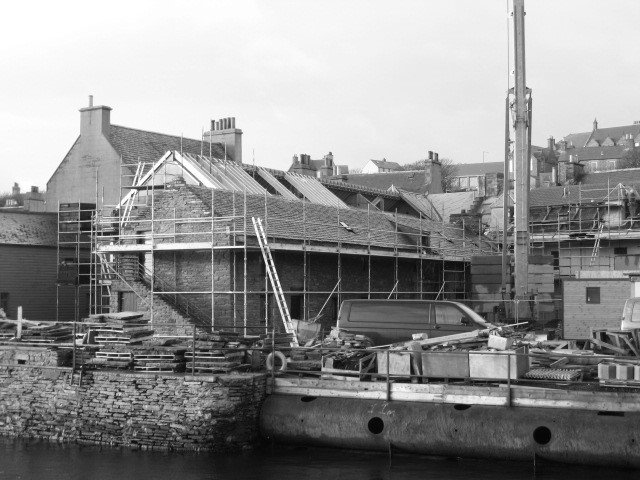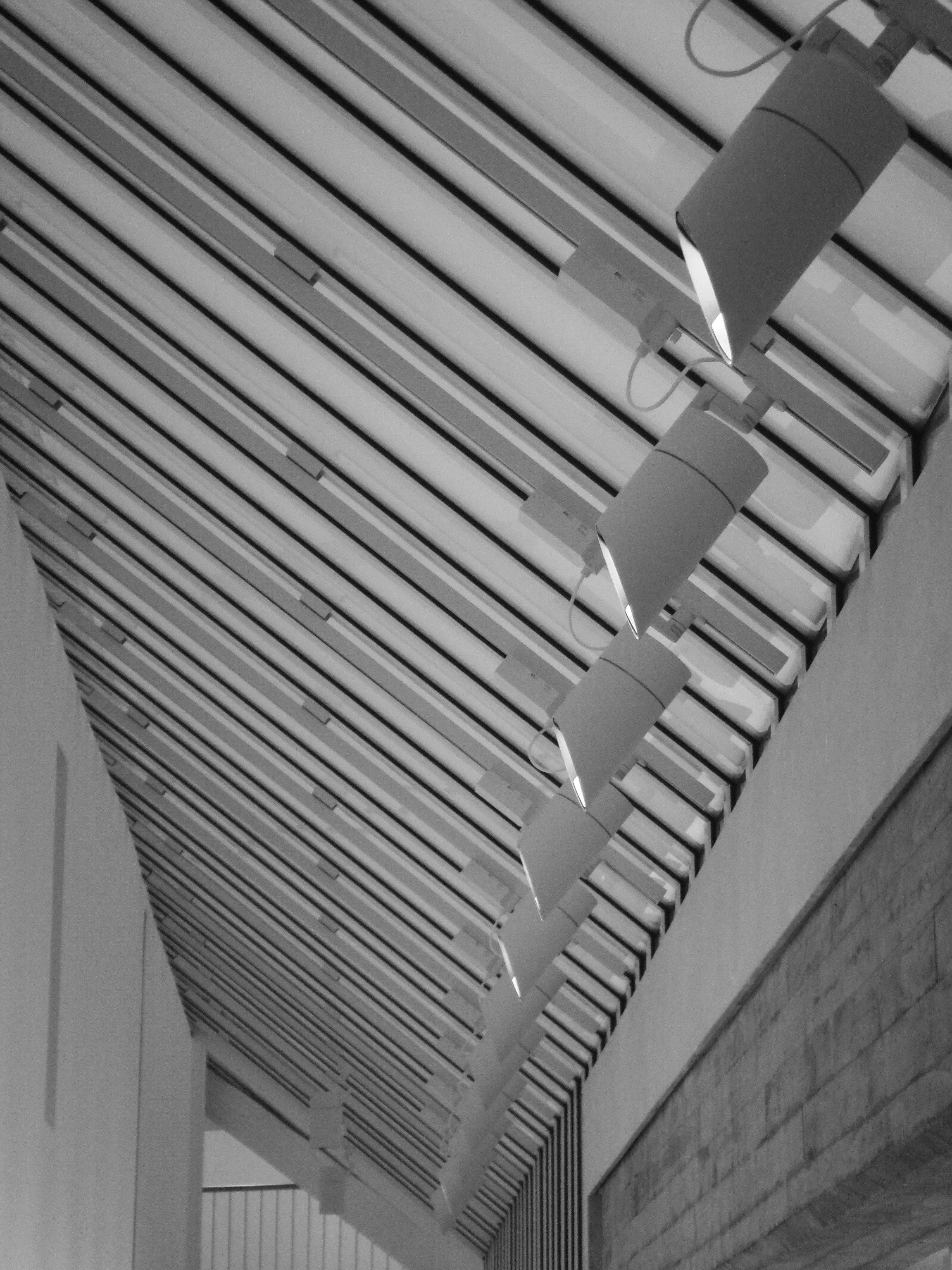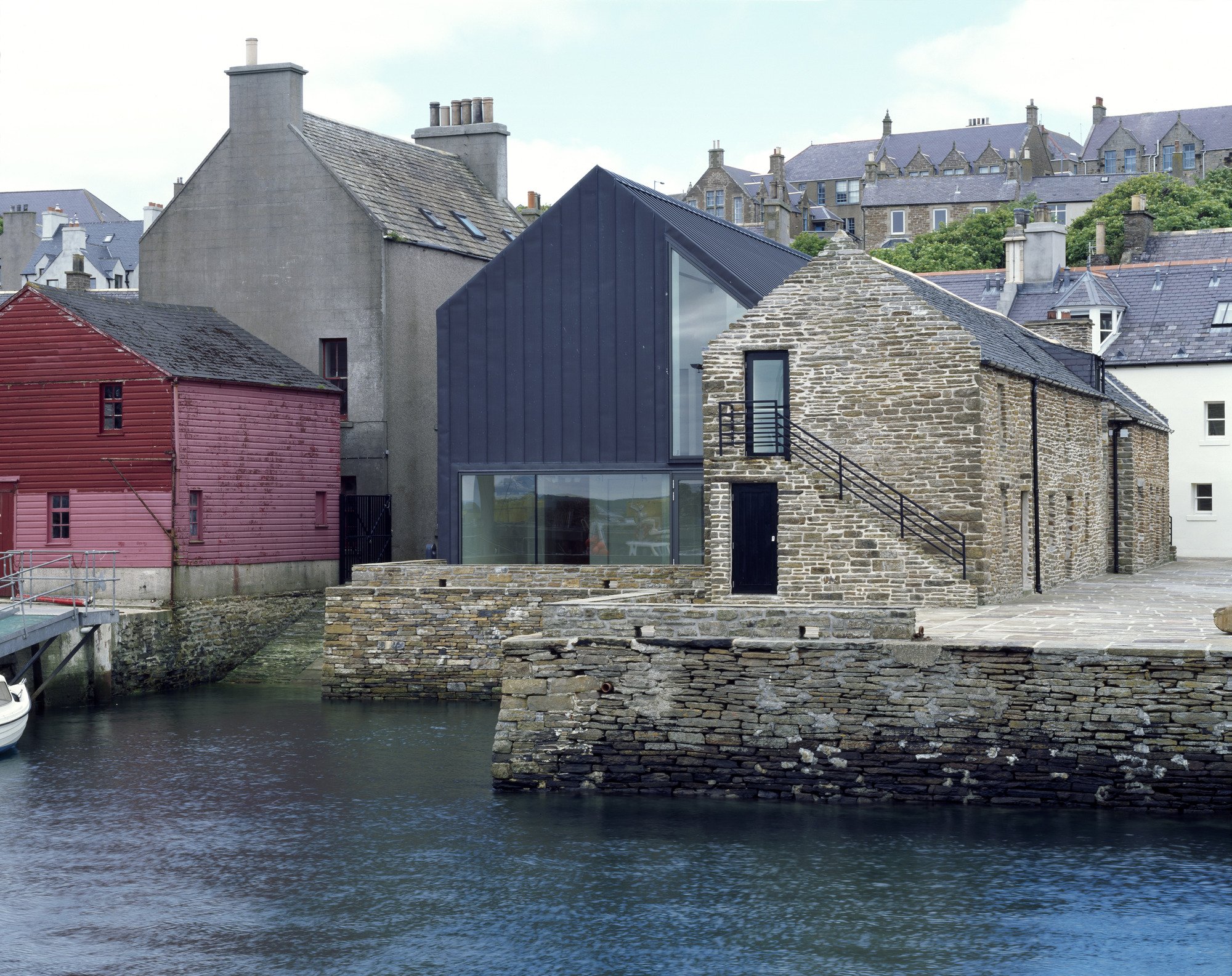The Pier Arts Centre
Stromness, Orkney
“The jury was very impressed with the seemingly effortless way in which the new gallery has been settled in beside its neighbour as an integral part of the townscape.”
- Judges Citation RIAS Andrew Doolan ‘Best Building in Scotland’ Award winner 2007
The Pier Arts Centre project is a combination of permanent gallery space for the collection and new temporary galleries. The commission involved the complete refurbishment of the historic pier buildings, along with a new gallery structure. The permanent galleries house a collection of British contemporary art of international status. The remarkable core of the collection stems from the private collection of the centres founder, Margaret Gardiner 1904-2005.
We understand buildings to be made up of rooms, rooms that have different characteristics and different atmospheres. We like to think in terms of these characteristics, tall rooms, long low rooms with views out to the town or to the sea, quiet rooms, intimate rooms and so on. The Pier Gallery in effect already had a collection of very fine rooms, realised through the original and beautiful conversion done in the late 1970’s by Kate Heron and Axel Burrough. Although we had to reduce these buildings back to their basic structure to then bring the fabric and services up to the requirements of a 21st century museum we were determined to carefully reinstate the original interiors. We viewed these rooms as being part of this unique collection.
The plan of the building is in effect three separate but connected elements: a building that is part of Stromness’s main street, Victoria Street and two parallel buildings that extend from the street towards the Hamnavoe. The street building we called the meeting house, this contains entry, administration, library and meeting rooms along with an artist’s studio and flat. The original Pier building, the strong house, contains the collection while the new building, the black house, contains temporary gallery space along with back of house facilities and in the attic storey the archive and collection storage.
The form of the new building adopts a familiar guise; a simple pitched roof recalls a traditional waterfront warehouse. Its familiarity however is transformed and undermined through a façade that shifts from solid to void; black patinated zinc ribs alternate with translucent glass infills. Our intention was to realise a building that is grounded in its location yet through a lightness of touch escapes the Medusa effect of the prevalent stone culture. The resulting building and its construction is not traditional yet it has a resonance with the place.
Two artists, who both showed in sleeper during the early design work for the Pier, influenced our thinking. Ragna Robertsdottir, from Iceland, brought a translucent beauty both within herself and her work, a veil of volcanic particles whose density varied as the viewer moved around the room. Ragna’s installation in sleeper clarified an idea for a façade that alters as the viewer moves. The glazed façade describes the linear circulation strategy that connects all three buildings while exposing a skeletal structure. The spacing of the ribs recalls the original gallery’s rafters. Roger Ackling reinforced the idea suggested by Robertsdottir’s installation. His work involves the burning of delicate lines into a found piece of wood. Through his work we saw how the new building could be indelibly etched into the existing fabric of the town. The new building asserts its presence without undermining the original pier building. When viewed gable on the new building is solid but begins to melt as the viewer moves allowing it to fade as the original pier building comes into view.
Freud in his essay on The Uncanny, 1919, says ‘‘it may be true that the uncanny is something which is secretly familiar which has undergone repression and then returned from it and that everything that is uncanny fulfils this condition.’’
The form of the new building is familiar, yet it takes on the black vestment of a dignified and valued elder. While giving a clue that this is a cultural building it also has a quality that is ambivalent and melancholic. The softness of the black patinated zinc cladding has an air of absence about it, a sense of Neil Gunn’s horror vacui, or fear of vacant spaces.
The meeting house onto Victoria Street is seen as the antithesis of the black house, all is white. Again this expression is recognisable, the whitewashing of vernacular buildings is very familiar yet it too has an uncanny air about it. The streets of Stromness are either stone or dull coloured render, the whiteness of the Pier Arts Centre has a hint of the spectre. Internally the spaces are seen as a backdrop to the art. The materials and surfaces are bleached or translucent. Within these muted spaces there are moments of clarity with clear views out to the Hamnavoe, a connection to the northern landscape.
“A strikingly modern restoration, refurbishment and new build scheme which provides a much-visited arts centre. Despite being in a conservation area of outstanding merit, the design sits comfortably with the surrounding buildings. The uncompromisingly contemporary choice of materials fit surprisingly well with the local style of stone houses and boat sheds. This is a mature work that displays great inventiveness and shies away from simply providing a pastiche intervention.”
- Judges Citation Civic Trust Award winner 2008
-
Contract Value
£2.8M
Area
1,200m2
Completion
2005-2006
Client
The Pier Arts Centre
Contract
Traditional
-
Architects - Reiach and Hall Architects
Project Manager - Pentarq Project Manager
Structural Engineer - SKM Anthony Hunt
Quantity Surveyor - Pentarq Quantity Surveyor
Planning Supervisor - Reiach and Hall Planning Supervisor
Main Contractor - Casey Construction Ltd
M&E Consultants - KJ Tait and Associates
Access Consultant - JMU Access Partnership
Lighting Architect - FOTO-Ma
-
Awards
Europa Nostra Award 2009
Mies van der Rohe Award 2009 Longlisted
RIBA National Award 2008
RIBA Award 2008
RIAS Andrew Doolan Award for Architecture Best Building in
Scotland 2007
Inverness Architectural Association Awards Best Public Building in
the Highlands and Islands 2008
Scottish Design Awards Architecture Grand Prix 2008
Scottish Design Awards Best Public Building 2008
Scottish Design Awards Northern Exposure Award 2008
Civic Trust Award 2008
Stirling Prize 2008 Longlisted
ArtFund Prize formerly the Gulbenkein 2008 Shortlisted
-
The Pier Arts Centre project is a combination of permanent gallery space for the collection and new temporary galleries. The commission involved the complete refurbishment of the historic pier buildings, along with a new gallery structure. The permanent galleries house a collection of British contemporary art of international status. The remarkable core of the collection stems from the private collection of the centres founder, Margaret Gardiner 1904-2005.
We understand buildings to be made up of rooms, rooms that have different characteristics and different atmospheres. We like to think in terms of these characteristics, tall rooms, long low rooms with views out to the town or to the sea, quiet rooms, intimate rooms and so on. The Pier Gallery in effect already had a collection of very fine rooms, realised through the original and beautiful conversion done in the late 1970’s by Kate Heron and Axel Burrough. Although we had to reduce these buildings back to their basic structure to then bring the fabric and services up to the requirements of a 21st century museum we were determined to carefully reinstate the original interiors. We viewed these rooms as being part of this unique collection.
The plan of the building is in effect three separate but connected elements: a building that is part of Stromness’s main street, Victoria Street and two parallel buildings that extend from the street towards the Hamnavoe. The street building we called the meeting house, this contains entry, administration, library and meeting rooms along with an artist’s studio and flat. The original Pier building, the strong house, contains the collection while the new building, the black house, contains temporary gallery space along with back of house facilities and in the attic storey the archive and collection storage.
The form of the new building adopts a familiar guise; a simple pitched roof recalls a traditional waterfront warehouse. Its familiarity however is transformed and undermined through a façade that shifts from solid to void; black patinated zinc ribs alternate with translucent glass infills. Our intention was to realise a building that is grounded in its location yet through a lightness of touch escapes the Medusa effect of the prevalent stone culture. The resulting building and its construction is not traditional yet it has a resonance with the place.
Two artists, who both showed in sleeper during the early design work for the Pier, influenced our thinking. Ragna Robertsdottir, from Iceland, brought a translucent beauty both within herself and her work, a veil of volcanic particles whose density varied as the viewer moved around the room. Ragna’s installation in sleeper clarified an idea for a façade that alters as the viewer moves. The glazed façade describes the linear circulation strategy that connects all three buildings while exposing a skeletal structure. The spacing of the ribs recalls the original gallery’s rafters. Roger Ackling reinforced the idea suggested by Robertsdottir’s installation. His work involves the burning of delicate lines into a found piece of wood. Through his work we saw how the new building could be indelibly etched into the existing fabric of the town. The new building asserts its presence without undermining the original pier building. When viewed gable on the new building is solid but begins to melt as the viewer moves allowing it to fade as the original pier building comes into view.
Freud in his essay on The Uncanny, 1919, says ‘‘it may be true that the uncanny is something which is secretly familiar which has undergone repression and then returned from it and that everything that is uncanny fulfils this condition.’’
The form of the new building is familiar, yet it takes on the black vestment of a dignified and valued elder. While giving a clue that this is a cultural building it also has a quality that is ambivalent and melancholic. The softness of the black patinated zinc cladding has an air of absence about it, a sense of Neil Gunn’s horror vacui, or fear of vacant spaces.
The meeting house onto Victoria Street is seen as the antithesis of the black house, all is white. Again this expression is recognisable, the whitewashing of vernacular buildings is very familiar yet it too has an uncanny air about it. The streets of Stromness are either stone or dull coloured render, the whiteness of the Pier Arts Centre has a hint of the spectre. Internally the spaces are seen as a backdrop to the art. The materials and surfaces are bleached or translucent. Within these muted spaces there are moments of clarity with clear views out to the Hamnavoe, a connection to the northern landscape. “We don’t think that there has been a better building built in the whole of Scotland since the Pier Art Centre was built.” - Judges Citation IAA ‘Best Building in the Highlands and Islands’ Award winner 2008.
“...The jury was very impressed with the seemingly effortless way in which the new gallery has been settled in beside its neighbour as an integral part of the townscape.” - Judges Citation RIAS Andrew Doolan ‘Best Building in Scotland’ Award winner 2007.
“A strikingly modern restoration, refurbishment and new build scheme which provides a much-visited arts centre. Despite being in a conservation area of outstanding merit, the design sits comfortably with the surrounding buildings. The uncompromisingly contemporary choice of materials fit surprisingly well with the local style of stone houses and boat sheds. This is a mature work that displays great inventiveness and shies away from simply providing a pastiche intervention.” - Judges Citation Civic Trust Award winner 2008.
Sketchbook
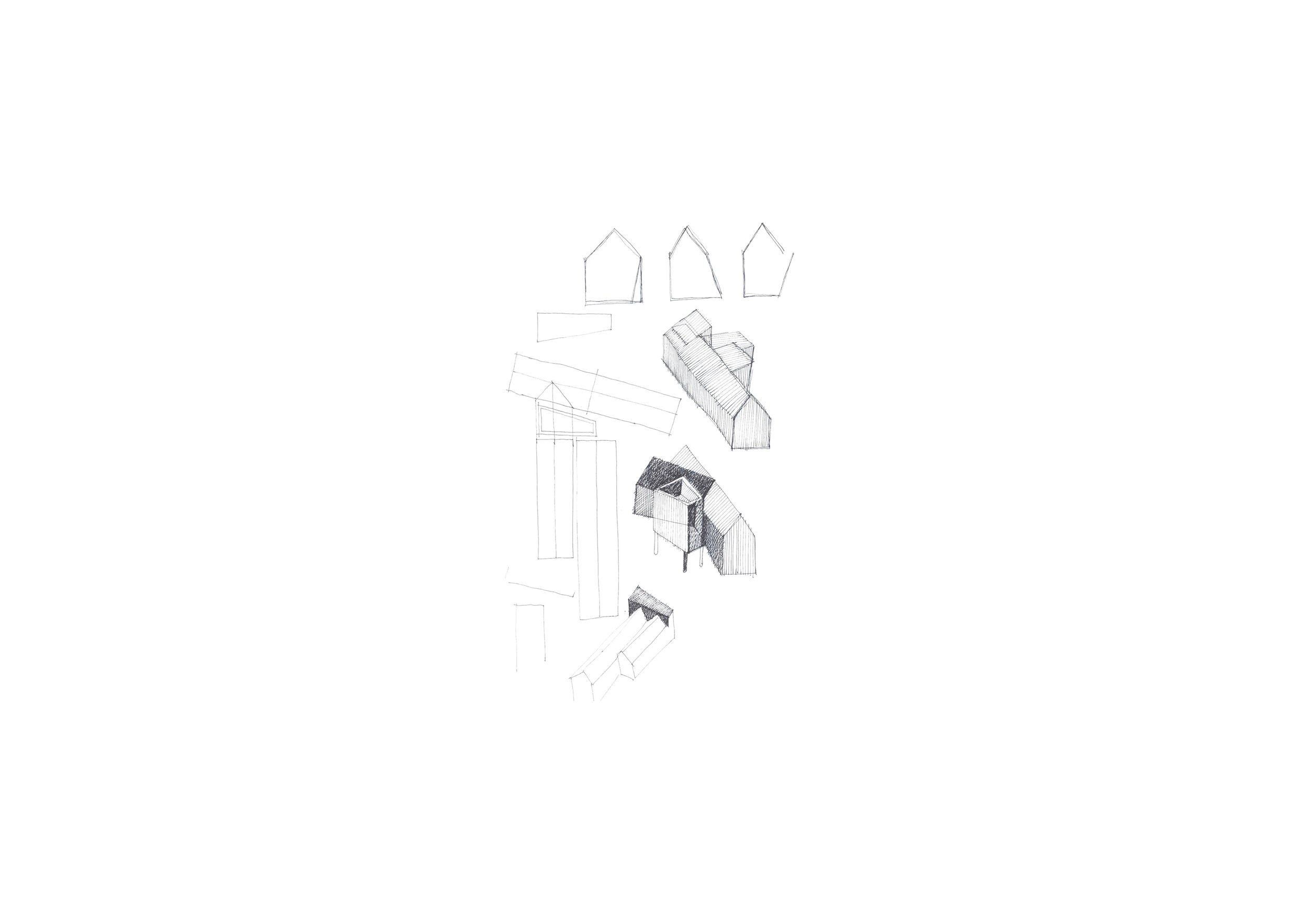
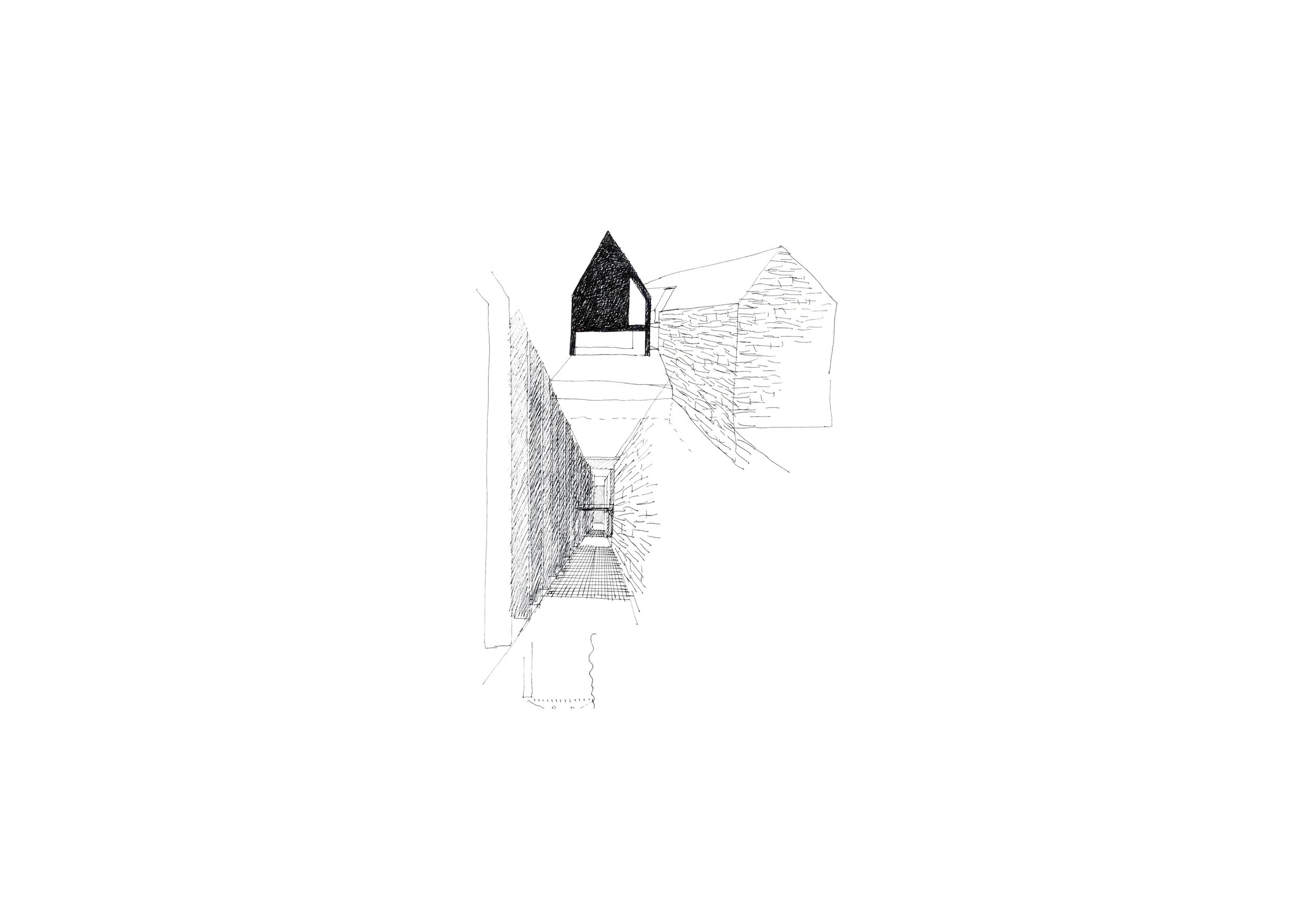
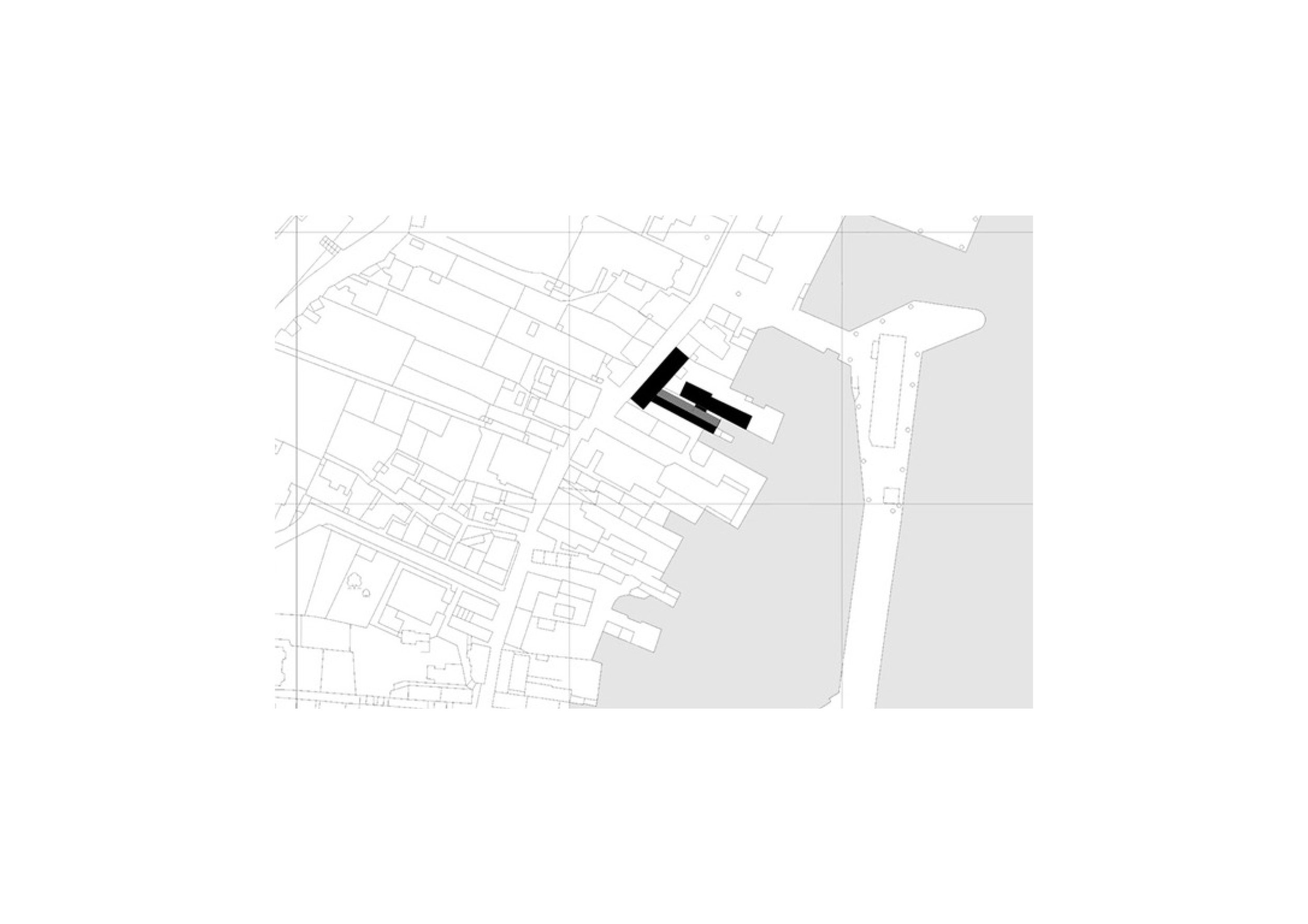

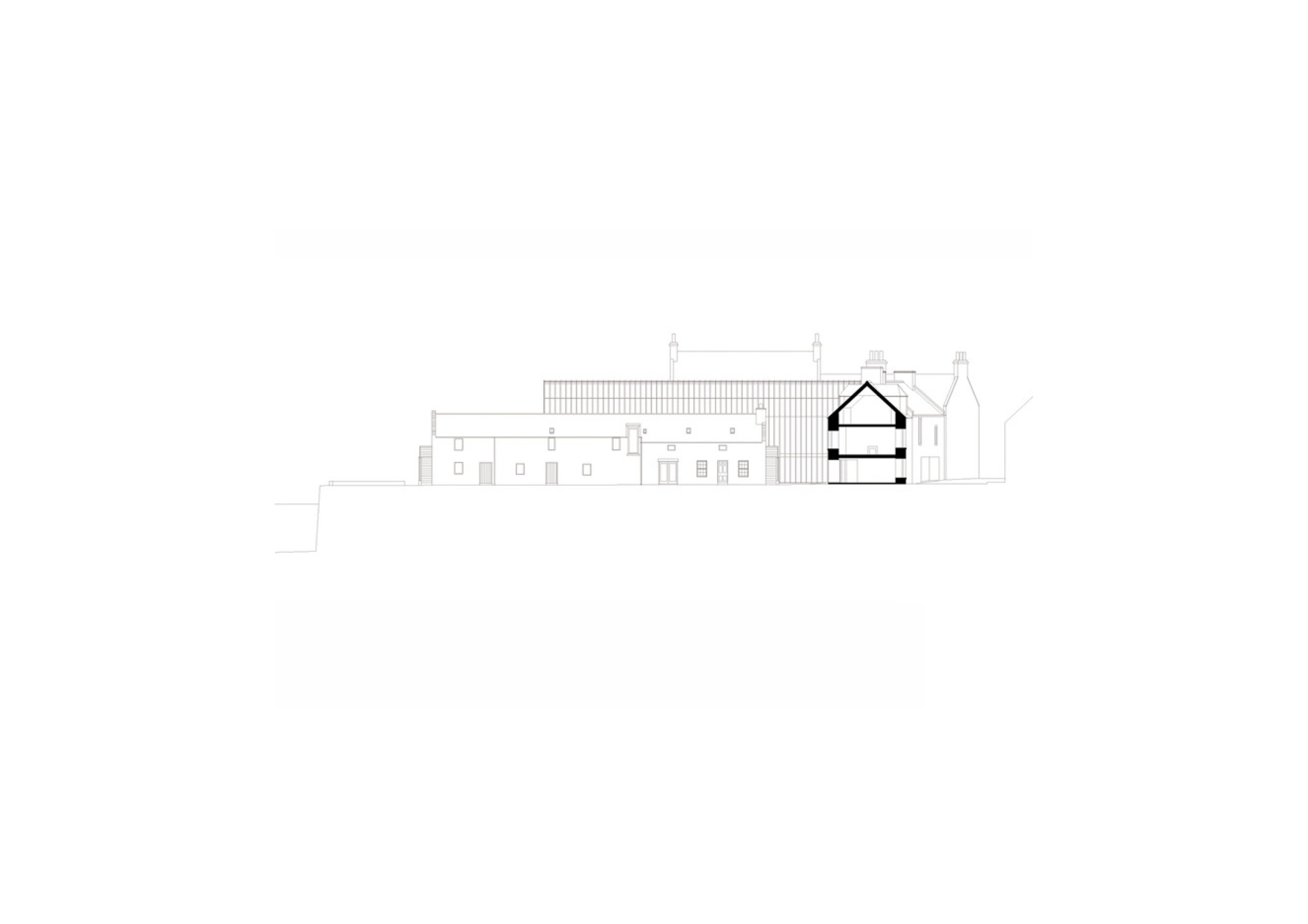
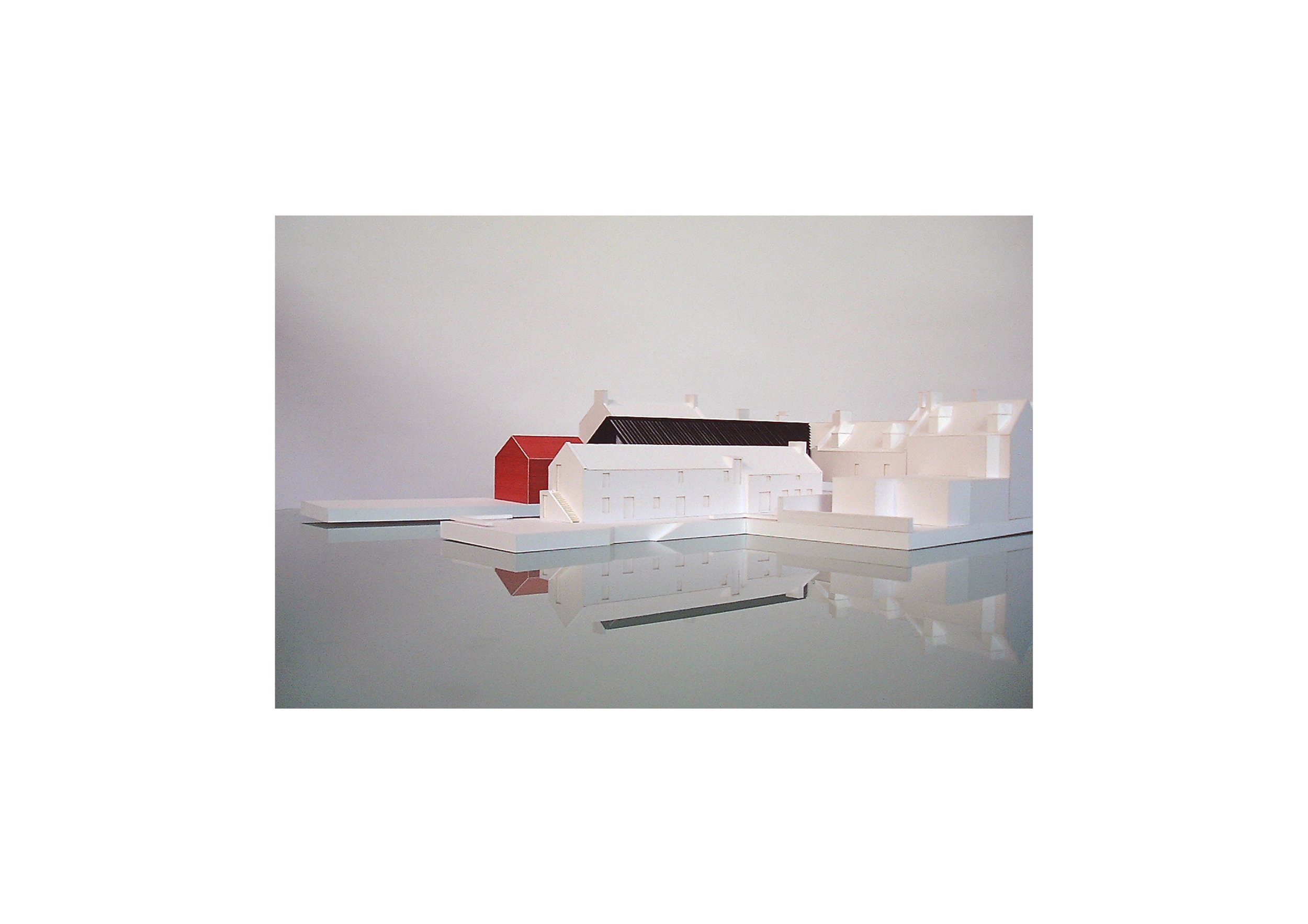
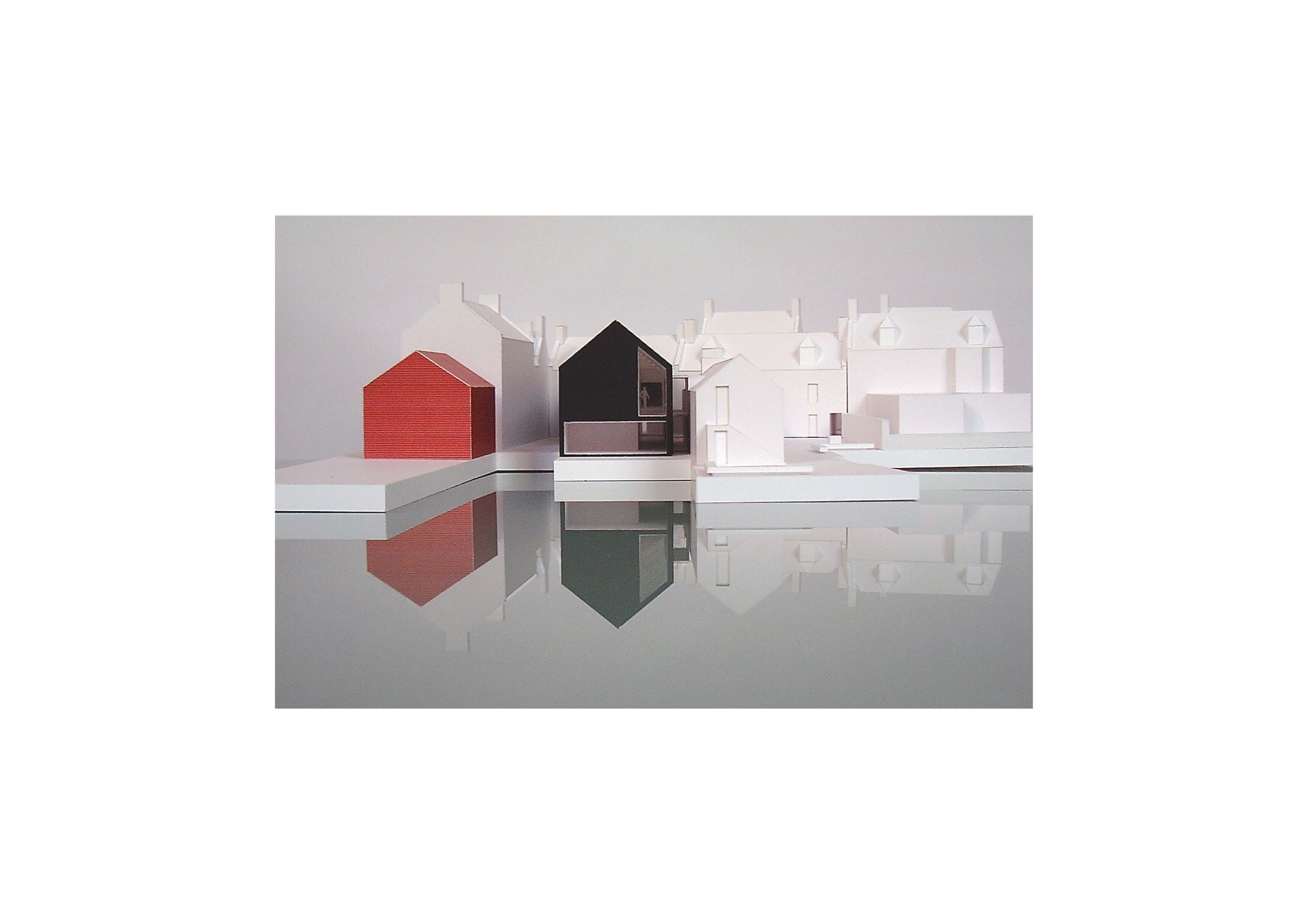

Site Photographs

